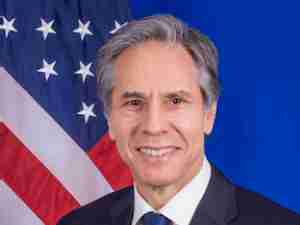Chilly winter seen denting U.S. first-quarter growth
By: Reuters | Apr 29 2014 at 11:01 AM | International Trade
A brutally cold winter likely put a brake on the U.S. economy in the first quarter, but growth fundamentals remain strong and signs of an acceleration have already emerged.
Gross domestic product probably grew at a 1.2 percent annual rate, according to a Reuters survey of economists. In addition to the weather, the economy was lumbered by weak exports and a slowing in the pace of restocking by businesses.
While growth appears to have pulled back sharply from the fourth-quarter's 2.6 percent pace, investors and Federal Reserve officials are likely to shrug off the slowdown and focus on recent data indicating strength at the tail end of the quarter.
"The first quarter is history and of no value in terms of assessing the economy's underlying momentum. Things are gearing up to get to that much-awaited 3 percent type of growth that the Fed has been looking for," said Anthony Karydakis, chief economic strategist at Miller Tabak in New York.
The Commerce Department will release its first snapshot of first-quarter GDP at 8:30 a.m. (1230 GMT) on Wednesday, only hours before the Fed concludes a two-day policy meeting.
Fed officials, who have already dismissed the first quarter as being compromised by the weather, are expected to announce a further reduction in the amount of money they are pumping into the economy through monthly bond purchases.
"We suspect the Fed will not allow the weak GDP print to derail the taper," said Samuel Coffin, an economist at UBS in Stamford, Connecticut.
STRONG FUNDAMENTALS
The unusually cold and snowy winter may have sliced off as much as 1.4 percentage points from GDP growth.
A slowdown in the pace of inventory accumulation is expected to be an additional drag on growth. Aggressive restocking by businesses in the second half of 2013 had left warehouses bulging.
Trade also likely undercut growth, partly because of the weather, which left goods piling up at ports.
Together, inventories and trade are forecast to chop off at least one percentage point from GDP growth.
Despite the anticipated growth slowdown, the economy's fundamentals likely remained solid. A measure of domestic demand that strips out exports and inventories is expected to have accelerated from the fourth quarter's pedestrian 1.6 percent pace.
"Underlying fundamentals remain healthy, reinforcing our thesis that the sudden weakness was temporary," said Peter D'Antonio, an economist at Citigroup in New York. "We expect a sharp bounce in growth in coming quarters."
Consumer spending, which accounts for more than two-thirds of U.S. economic activity, likely slowed from the fourth-quarter's brisk 3.3 percent pace as freezing temperatures reduced foot traffic to shopping malls. But demand for heating likely tempered the deceleration.
Economists said the weather also likely slowed business spending on equipment, but investment in nonresidential structures, such as gas drilling, probably rebounded.
Investment in home building likely contracted for a second straight quarter. While some of the anticipated decline could be pinned on the weather, it would also underscore a loss of underlying momentum from a year ago, when mortgage rates began to move higher.
"Growth is moving away from housing. Housing is going to be a neutral factor to growth this year," said Miller Tabak's Karydakis.








